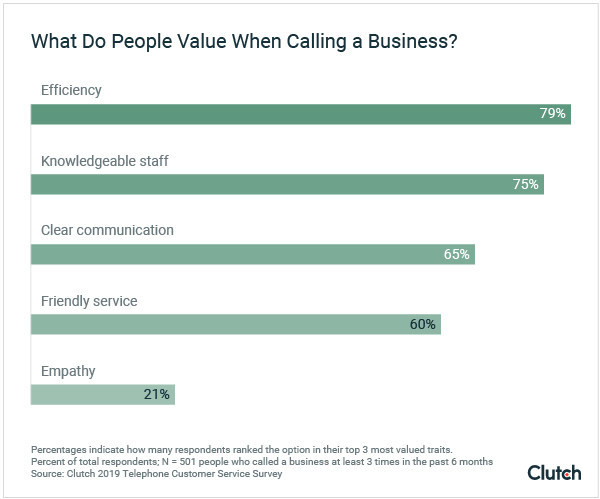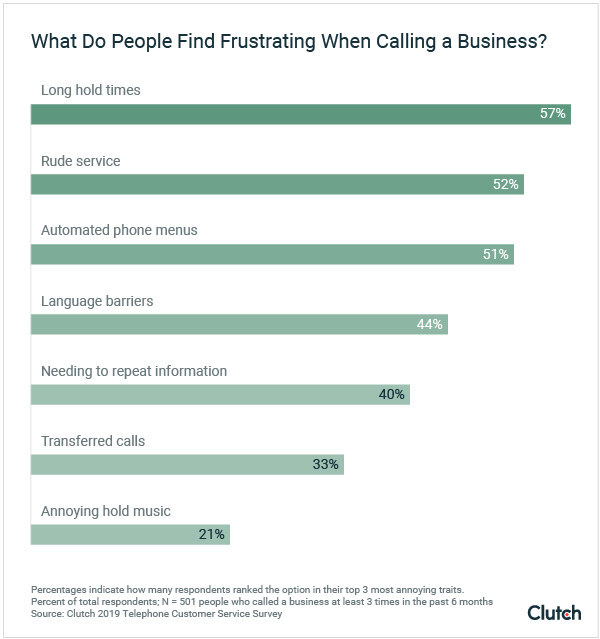When asked to rank their top three frustrations with telephone customer service, the largest percentage of people chose being kept on hold (57%), followed by rude service (52%), and automated phone menus (51%).
The data comes from a new survey report that explores why businesses must prioritize speed when managing their phone lines, and how they can implement improvements. Clutch, the leading B2B research, ratings, and reviews platform, conducted the survey of 501 people who called a business more than three times in the past six months.
Businesses should think both analytically and creatively about how they can reduce phone hold times. To approach the issue analytically, businesses should collect data on their hold times, asking questions such as:
- When are customers on hold the most?
- What departments receive the most calls?
- What questions do customers most commonly ask?
Some creative options for reducing hold times include calling the customer back when they are at the front of the line instead of making them wait on the phone, or offering them an option to schedule a call-back for a more convenient time.
Customers Prioritize Efficiency When Calling Businesses
People most often ranked an “efficient resolution to my issue” (79%) as the trait they value most when calling business.
To increase efficiency, businesses can consider balancing their telephone customer service with other AI-based solutions, such as chatbots.
Shep Hyken, a customer service and experience expert, speaker, and author, said that chatbots work well for questions such as “Where’s my package?” or “I want to check my bank balance.”
“You don’t need to talk to a human to answer those questions and often, it’s more efficient to do so with a digital format,” Hyken said.
Businesses Shouldn’t Abandon Their Phone Lines
Given all the new communication options available, some businesses may be tempted to give up on their phones, directing all customers to chatbots, social media, or contact forms.
Yet, phones remain a critical customer communication channel for complex or personalized inquiries.
In the past six months, people most commonly called a business to fix an issue (24%), ask a question (23%), or make an appointment (19%).
“How many times will you contact a business and they’ll send you a link to their FAQ page, and you say, ‘I already checked that page, or otherwise, I wouldn’t be messaging you,'” said Nathan Strum, CEO of Abby Connect, a virtual receptionist and telephone answering service provider. “It’s frustrating when people don’t think [their issue] falls into a certain category, even if in the end, it might. They want to feel heard.”







